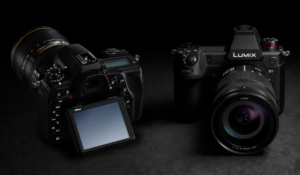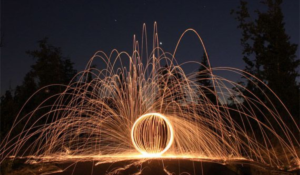What is a Rangefinder Camera?

The rangefinder camera is a unique type of camera that’s known for its precise manual focusing system and lightweight, compact design. These cameras combine accuracy and simplicity with a double-window design.
Definition and Function:
A split-image is usually visible in the eyepiece of a rangefinder camera. The split-image is merged manually by rotating a wheel or adjusting the ring. Rangefinders, unlike autofocus systems offer quick exposures while maintaining focus precision. This makes them popular with street photographers, as well as those who value speed, accuracy, and quality in their photography.
Focusing Mechanism
The majority of rangefinders show two images that are in focus at the same time. Early models had separate rangefinder and viewfinder windows. Later designs combined these to make it easier to use. This system allows photographers adjust the focus with precision to ensure sharp images, even in difficult shooting conditions.
History:
The first rangefinder cameras were the 3A Kodak Autographic Special, which was marketed in 1916. Leica M3 was introduced in 1954 and marked a milestone in the evolution rangefinder cameras. It combined the rangefinder and viewfinder into one unit, and set the standard for future design. Rangefinders are still popular despite the advent of SLRs, autofocus, and other technologies. They are valued for their reliability, simplicity, and precision.
Rangefinder cameras have many benefits:
- Rangefinders are able to focus precisely without the use of electronics. This makes them ideal for many shooting situations.
- Rapid Focus Adjustment – The split-image focus mechanism allows quick adjustments in low-light conditions or when photographing fast-moving objects.
- Wider Field: Rangefinders offer a larger field of view, which allows photographers to anticipate and see beyond their frame.
- Rangefinders are quiet because they do not have a mirror mechanism. They are ideal for discreet photography.
- Rangefinders are equipped with high-quality prime lenses that produce sharp and detailed images.
- Compact and reliable: Rangefinders are light and compact and ideal for street and travel photography. The rangefinder cameras offer a unique shooting experience that allows photographers to concentrate on composition and exposure.
Rangefinder cameras have some drawbacks.
- Rangefinders can experience parallax errors, particularly at close ranges. Photographers will need to make adjustments for an accurate frame.
- Manual Focusing: For some photographers, manual focusing can be difficult due to the lack of zoom. This requires practice and skill improvement.
Considerations for Rangefinders
- Film Rangefinders: Olympus RC, Hasselblad XPan, Fuji GW690iii, Canonet.
- Digital Rangefinders: Pixii, Leica M11.
Conclusion:
Photographers can enjoy simplicity, precision and a unique experience with rangefinder cameras. Although they have some drawbacks, such as manual focusing and parallax errors, the benefits of rangefinder cameras outweigh them for many photographers. Rangefinder cameras, whether they are digital or film, can enhance one’s creative process and understanding of photography.



